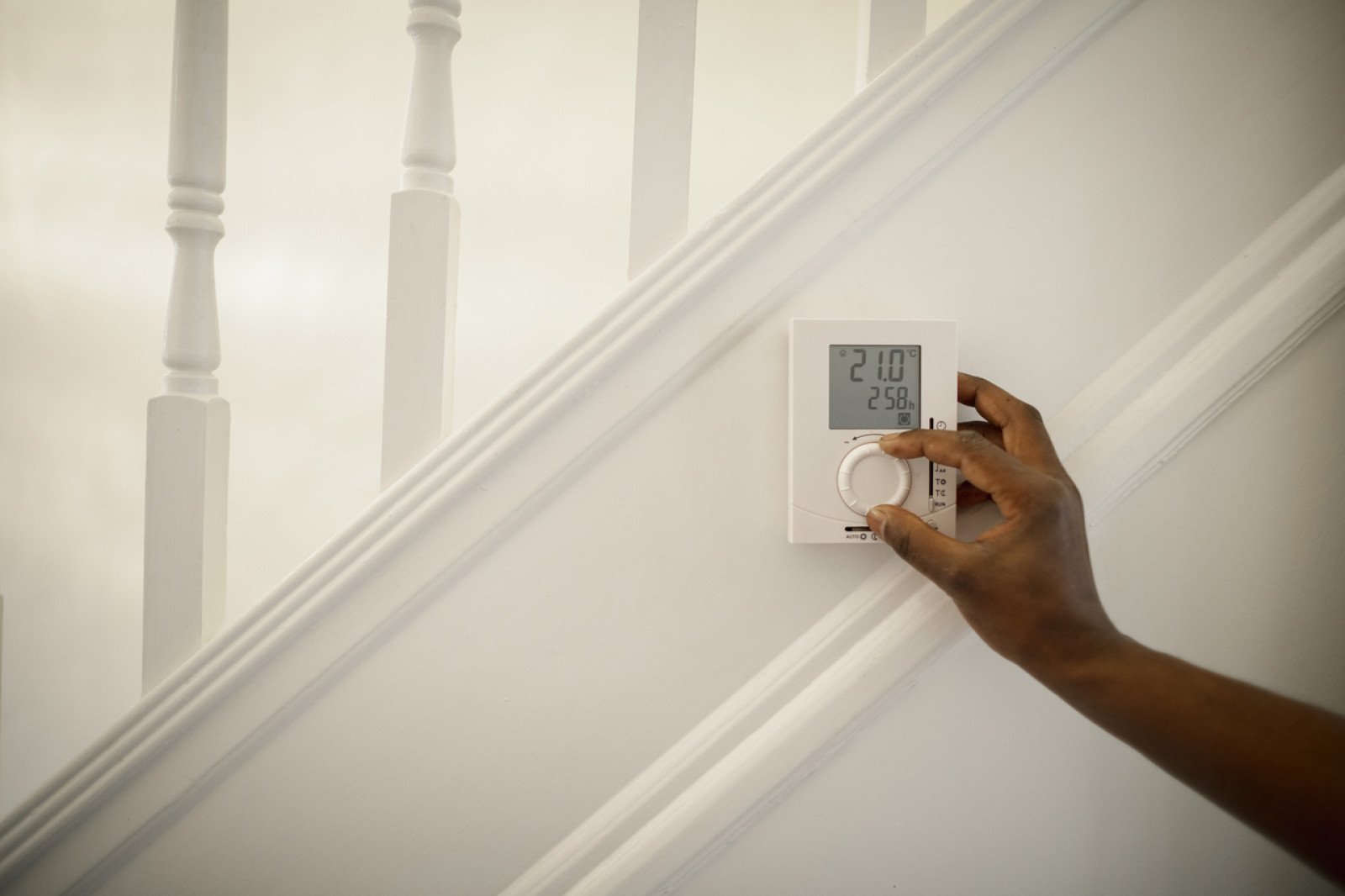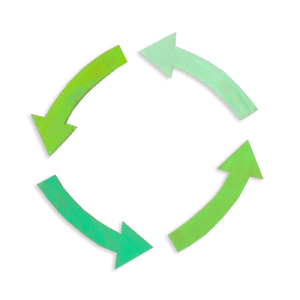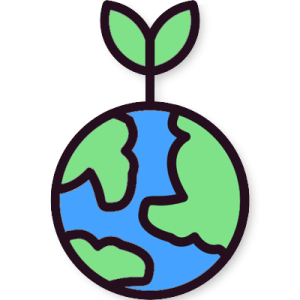Energy conservation ideas and actions
How can you reduce your impact on climate change by using less energy?

Overview
What do your students know about energy, conservation and climate change? Brainstorm ways to save energy, then develop criteria to rank them according to impact on the environment. Create a list of the top five actions your students can take to help fight climate change and create a sustainable energy future.
Instructions
What you'll need
- “Energy conservation action ideas” list
- “What I know about energy and conservation” worksheet
- "What is energy conservation" video
What do your students know about energy and conservation?
- Watch the "What is energy conservation" video with your students to help them understand the concept of energy conservation.
- Have students reflect on what they know about energy use, climate change and energy conservation using the “What I know about energy and conservation” worksheet. Use one of the following approaches:
- Students answer the questions on their own using a printed copy of the worksheet or online fillable pdf.
- Students work with a partner to discuss and answer the questions.
- Students discuss the questions using an inside-outside circle. Split the class in half and have one half form the inside circle and the other half form the outside circle with pairs facing each other. Ask a question from the worksheet, let students think of their answers and then share with their partner. Have the outside circle rotate to the next person and ask another question from the worksheet.
Rank the impact of energy conservation actions
- Create small groups of four and have students think about the following question:
- How can you use less energy and fewer fossil fuels to reduce greenhouse gas emissions and the human impact on climate change?
- Have each group, on a piece of paper or digital document, brainstorm a list of energy conservation actions that reduce the impacts of climate change.
- A list of “Energy conservation action ideas” is provided if needed.
- Develop or co-develop criteria for deciding which energy conservation actions best reduce the impacts of climate change. Record criteria on the board as a class or within each group. Encourage students to think about:
- Clean energy sources (renewable vs fossil fuels)
- Greenhouse gas emissions
- Indigenous perspectives of caring for the environment for future generations
- Ease of implementation
- In their groups, rank the impact of the actions against the criteria to create a top five list.
- Remind students to listen to each other, contribute ideas and support different perspectives in their group.
- Have groups share their top five actions.
- Record a list on the board and discuss criteria used.
- See extensions for sharing actions on social media.
Reflection
- Choose one or more of the following prompts to complete as a think-pair-share reflection:
- How well did your group communicate? Was everyone able to contribute? Did everyone try to listen and value different perspectives?
- Was it easy or hard to decide as a group on a top five list? Did having criteria make it easier?
- Will you change any of your behaviours to use less energy and reduce your impact on climate change? Why or why not?
Modify or extend this activity
Extensions
- Create a hashtag or search for top hashtags related to energy conservation actions and climate change and have students post their top five actions on social media.
- Research a local environmental organization.
- Invite a guest speaker (Indigenous Elder or Knowledge Keeper, environmental organization, school district facilities, local government, utilities provider) to speak about energy conservation, sustainability, climate change and how our actions impact the environment.
- Collaborate with an English Language Arts teacher and have students create a piece to encourage others to take action to reduce their impact on climate change (e.g. essay, persuasive speech, organized debate, spoken word, skit, poem, etc.).
Curriculum Fit
Core competencies
Communication
- Communicating
- Collaborating
Thinking
- Creative thinking
- Critical and reflecting thinking
Personal and social
- Social awareness and responsibility
Science 10, 11, 12
Big ideas
- Energy is conserved and its transformation can affect living things and the environment. (Science 10)
- Scientific understanding enables humans to respond and adapt to changes locally and globally. (Science for Citizens 11)
- Human practices affect the sustainability of ecosystems. (Environmental Science 11)
- Living sustainably supports the well-being of self, community and Earth. (Environmental Science 12)
Content
- Impacts of energy transformations (Science 10)
- Actions and decisions affecting the environment (Science for Citizens 11)
- Human actions and their impact on ecosystem integrity (Environmental Science 11)
- Personal choices and sustainable living (Environmental Science 12)
Curricular competencies
Questioning and predicting
- Make observations aimed at identifying their own questions about the natural world
Processing and analyzing data and information
- Apply First Peoples perspectives and knowledge and local knowledge as sources of information
- Analyze cause-and-effect relationships
Applying and innovating
- Contribute to care for community and world through individual and collaborative approaches
- Contribute to finding solutions to problems at a local and/or global level through inquiry
Communicating
- Communicate scientific ideas, information and suggested course of action for a specific purpose and audience
First Peoples Principles of Learning
- Learning is holistic, reflexive, reflective, experiential and relational.
- Learning involves recognizing the consequences of one’s actions.
Assessments
- Assess students’ ability to communicate in their paired or group work.
- Assess students’ ability to generate and evaluate their ideas using criteria to create their top five list.
- Assess students’ understanding of how their actions impact the environment in the class discussion about criteria and how they came up with their top five list.
Teaching Notes
We use energy in our daily lives in many ways. We use it to get to school, power our lights, cook our food, heat our homes and to make and transport goods. Some of our energy comes from clean renewable sources like the sun, wind and water. Fossil fuels (coal, oil and natural gas) are also used as energy sources. They come from ancient plants and animals, and when burned, release greenhouse gases into the atmosphere. Greenhouse gases, including carbon dioxide, methane, nitrous oxide and water vapour, trap heat from the sun and warm the Earth.
Clean renewable energy sources
Choosing renewable energy sources helps reduce the impact of our energy use on the environment. In B.C., most electricity is generated from water, a clean and renewable source. Non-renewable energy sources have a greater impact on the environment than renewable energy sources. Burning fossil fuels for energy releases greenhouse gases and carbon into the environment that had previously been trapped underground.
Energy conservation
Energy conservation means using less energy by changing our behaviours. Energy conservation actions have a positive impact on the future. Students will come up with many ideas to save energy. Some Power Smart tips include:
- Turn off unnecessary lights.
- Use natural light. Open the blinds and turn off the lights.
- Turn off water when washing hands.
- Unplug electronics when not being used.
- Turn down the heat if you can.
Our everyday choices and actions impact the environment. We can make a difference by taking action for a sustainable energy future.
Energy-efficiency
Energy-efficiency refers to technologies that help complete a task with less energy. Innovation continues to develop new and creative ways to reduce our energy use through technology.
- Heat pumps are an efficient form of heating and cooling by electricity that moves heat from one place to another. There are both air source heat pumps (moves the heat from outside to inside) and ground source heat pumps (moves heat from the ground).
- Automatic controls for lighting and heating.
- Energy-efficient light bulbs.
- Weather-stripping and fixing air leaks around doors and windows.
Learn more about saving energy with lighting in the "How can we save energy with lighting" video.
Everything is connected
The concept that everything in the environment and natural world is interconnected is foundational to Indigenous perspectives of land and place. It is understood that we have a responsibility to care for the land, plants and animals through everything we do and the choices we make.
Our energy choices impact the environment when fossil fuels are burned, releasing greenhouse gases. When we use less energy and choose clean renewable energy sources, we reduce our impact on the environment and help care for the Earth now and for future generations. Every little action adds up to making a big difference.








